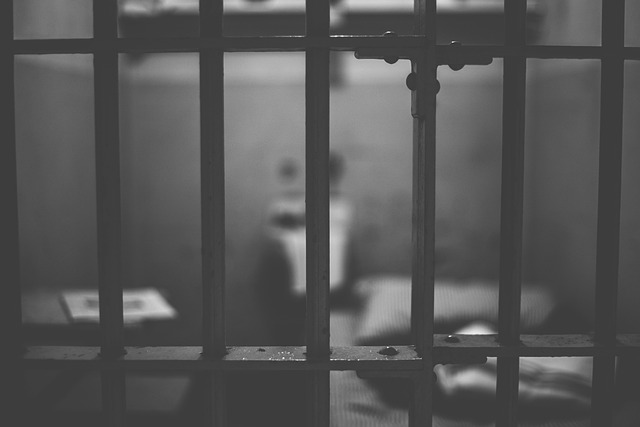Did you know that men in the United States have almost a 10% chance of going to prison in their lifetime? The odds of women going to prison are much lower, but it is still significant. Whether you want to study consequences or have a sentencing, you should know the differences between the two most common outcomes.
Jail and prison time are much different from one another. Keep reading to learn about the key differences between jail vs prison sentencing!
Who Goes Where?
One of the first things to differentiate between jail vs prison is the types of inmates they keep.
If someone has yet to hear sentencing or is awaiting trial, they will sit in a jail cell. Often, only people convicted of a crime go to prison. Jails don’t keep inmates for longer than a year. If the punishment for their crime is lengthy, people will go to prison.
The only people that end up in prisons are those that the government wants to detain. The Federal Bureau of Prisons oversees prisoners to ensure the safety of other citizens.
Youths that break the law are often placed in juvenile detention, which resembles a jail. These facilities house children that need to go on trial still or find a long-term placement solution. If a child is at risk to themselves or other people around them, this is where they often end up.
Also Read: Ethical Treatment of Prisoners in the USA
Types of Prisons
Not only is prison different from going to jail, but there is more than 1 type.
Federal and state prisons keep inmates if their sentence lasts more than a year. State prisons are run by their state’s government, so they vary across the country. These prisons consist of people convicted of robbery, sexual assault, and homicide.
State prisons hold dangerous inmates, but federal crimes are often worse.
Federal prisons consist of many departments to contain, rehabilitate, and oversee inmates. Both violent and nonviolent offenders can end up in federal prison, depending on what laws were broken. For example, many people in the business industry have gone to prison for fraud, even though they aren’t dangerous.
Quality of a Jail vs Prison
When you look at the facilities at a jail vs a prison, you may be more inclined to go to prison.
Prisons are long-term solutions and are well-funded. Although this is where the more dangerous people end up, they are well-kept and have different sections.
Jails aren’t very comfortable or as well maintained. Since people only stay in jail for a short period, they don’t need as many amenities. Although most jail cells are considered “drunk tanks,” there are a few exceptions.
Depending on the jail, inmates can still gain access to substance abuse help and education. Even vocational programs are offered to people in jail to help rehabilitate them.
Security Measures
Have you ever seen someone on a TV show go to prison for embezzlement or foreign affair issues?
Some of these prisons look like fancy apartments, and guests are permitted at almost all times. If a prisoner was convicted of crimes that weren’t deemed violent or at risk, they go to a minimum security prison. Not only can these prisoners stay comfortable, but they can also still go to work or school.
Maximum security prisons are much different, and there are security guards at every corner. To get to these prisons, visitors go through security screenings, and electric fences, and answer questions with a guard. These inmates are under surveillance at all times and some may be in solitary confinement.
When it comes to going to jail, the security measures aren’t as large. Sheriff’s departments and local governments create rules and manage jail sentences.
Outcome after Getting Out
Doing some time in jail isn’t seen as big of an issue as going to prison.
Many people find that it’s more challenging to jump back to a normal lifestyle after going to prison. Jail inmates don’t deal with long-term consequences since they can clear their records after rehab. Prisoners, however, have a serious crime attached to their record for life.
If someone goes to prison, they may not have an easy time finding a new job when they get out. You can get help from criminal defense lawyers near me if you’re concerned about your future.
When people get released from county jails, they have a choice to partake in several programs. Work release programs, furloughs, and house arrests are alternative options for less-dangerous people.
Regulations for Release
Both jails and prisons enforce good behavior programs.
Good behavior programs simply mean that inmates can only be released ahead of schedule if they are behaving. Depending on behavior and attitude in jail, they could get up to 90% of the time eliminated.
Prisons hold onto inmates for a longer period, even if they’ve been showing good behavior. Since prison inmates are more dangerous or could pose financial risks, they are less likely to get out early.
If you’re going to jail or prison, the best thing you can do is behave. The more that you cooperate, the easier it’ll be to do your time.
Learning the Difference Between Cells
When it comes to the legal sentencing of jail vs prison time, there is a big difference.
Typically, when someone is sentenced to confinement for more than a year, they find themselves in a prison. The federal government oversees and houses some of the most dangerous people in the country. Jails are more like holding cells until the inmates have received their sentencing.
Whether you or someone you know has the possibility to do time, you must understand the differences between Jail vs Prison.
Make sure you check out our page for more content about criminal prosecution and handling legal affairs!


